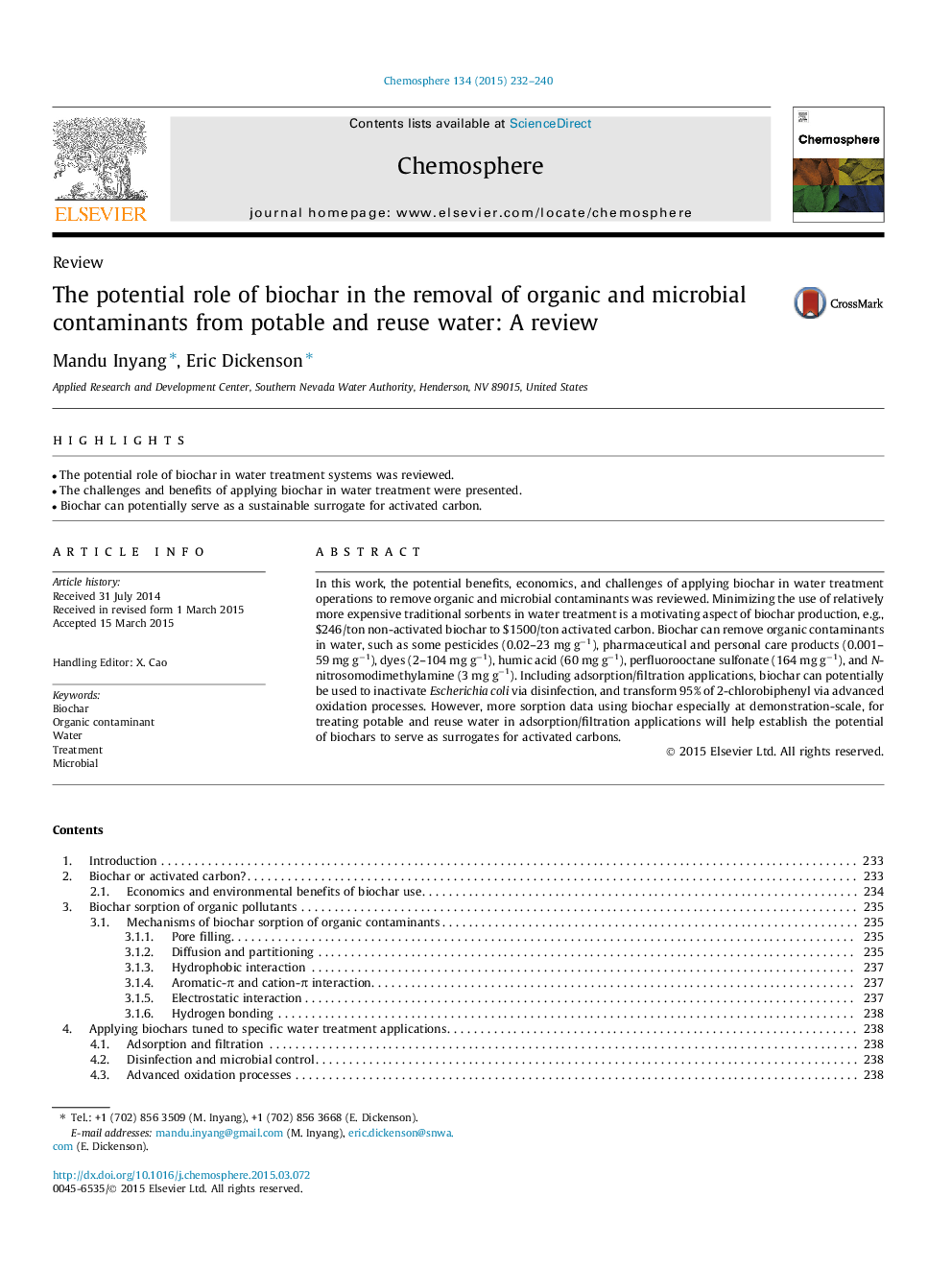| Article ID | Journal | Published Year | Pages | File Type |
|---|---|---|---|---|
| 6307598 | Chemosphere | 2015 | 9 Pages |
Abstract
In this work, the potential benefits, economics, and challenges of applying biochar in water treatment operations to remove organic and microbial contaminants was reviewed. Minimizing the use of relatively more expensive traditional sorbents in water treatment is a motivating aspect of biochar production, e.g., $246/ton non-activated biochar to $1500/ton activated carbon. Biochar can remove organic contaminants in water, such as some pesticides (0.02-23 mg gâ1), pharmaceutical and personal care products (0.001-59 mg gâ1), dyes (2-104 mg gâ1), humic acid (60 mg gâ1), perfluorooctane sulfonate (164 mg gâ1), and N-nitrosomodimethylamine (3 mg gâ1). Including adsorption/filtration applications, biochar can potentially be used to inactivate Escherichia coli via disinfection, and transform 95% of 2-chlorobiphenyl via advanced oxidation processes. However, more sorption data using biochar especially at demonstration-scale, for treating potable and reuse water in adsorption/filtration applications will help establish the potential of biochars to serve as surrogates for activated carbons.
Related Topics
Life Sciences
Environmental Science
Environmental Chemistry
Authors
Mandu Inyang, Eric Dickenson,
